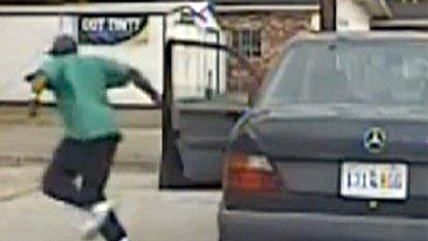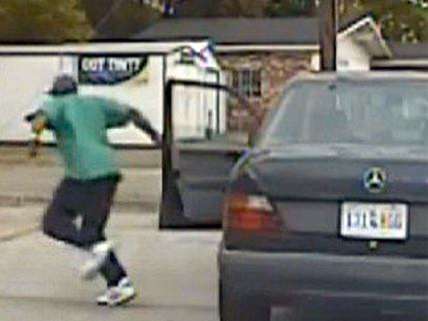Walter Scott Dashcam Video Released
Michael Slager had possession of Walter Scott's driver's license and car when he decided to chase him anyway.


The authorities in South Carolina have released dashcam video of the moments before Officer Michael Slager fatally shot Walter Scott as Scott tried to run away from him. The video shows Scott trying to exit the car and being ordered back in and then a couple of minutes later getting out of the car and running away. At the time, Slager had possession of Scott's driver's license. Scott also left his Mercedes behind and a passenger in the car. Nevertheless, Slager chose to pursue Scott, eventually shooting him eight times in the back, as caught by bystander video.
In between the two videos, eyewitnesses say a struggle ensued between Scott and Stagler but that Stagler appeared to be in control. Before the video of the shooting was released, Slager claimed he felt threatened for his life, that Scott tried to take his Taser, and that he believed he followed all his department's policies and procedures during the entire encounter with Scott. He continues to maintain that in light of the video, although his first defense attorney dropped him after that video came out.
Scott apparently ran from Slager because he had a bench warrant for nearly $20,000 in back child support payments. Slager has not explained why he chose to pursue Scott rather than, say, meet him at the address on his license or wait for him to try to retrieve his Mercedes from police custody. Criminal defendants don't generally make statements explaining their actions as it could hurt their defense. But, neither has the North Charleston Police Department repudiated that decision as not part of their departmental policy. Slager was fired after the video of his fatal shooting of Scott was made available to authorities—shooting a fleeing suspect in the back is against official departmental policy in (hopefully) every department in the country.
But the decision to pursue Scott and "suspects" like him, and escalate the situation, may not be. Seven other officers, white and black, joined Slager after he shot Scott. At least one may have seen Slager drop an object (likely a Taser) near Scott's body. The object may not have been a Taser—but it's hard to imagine any object it would be appropriate to lay next to the body of a man you just shot and killed. Slager also handcuffed Scott after shooting him—surveying many videos of fatal police shootings, this appears to be a widespread practice. Another common feature of such videos is the police officer barking commands at the person he just shot—Slager did that too.
North Charleston's mayor said on Wednesday he was ordering 150 more body cameras for the police department—the city bought 115 for its 340 police officers using $275,000 in federal money last year, but Slager was not equipped with one. Without video of the shooting of Walter Scott, Slager's boilerplate story about feeling threatened during a tense encounter would go unchallenged, as such narratives usually do. The case stresses the importance of the right to record police and why police disregard and hostility toward that right is dangerous.
Slager, however, is at least the fourth South Carolina cop in the last eight months charged for shooting at an unarmed person. As the Washington Post suggested, the national attention given to the Michael Brown and Eric Garner cases "probably played a role." Importantly, in at least one of those cases, that of the 2011 fatal shooting of Bernard Bailey, state authorities had been pursuing charges since before Ferguson made police violence a national issue. Prosecutors pursued the charges even when the Department of Justice said they didn't see enough evidence to pursue civil rights charges.
Conservatives like former Rep. Allen West, who claim the murder charge against Michael Slager shows "the justice system clearly worked," are being obtuse at best and dishonest at worst. Without video there wouldn't have been charges. After all, not a single officer involved in the aftermath challenge Slager's incredulous story. Yet South Carolina has managed to, relatively, put police shootings in their state under more scrutiny than places like, say, New York City. More cameras on cops will inevitably lead to even more scrutiny, even in places (like New York?) most resistant to it.
Show Comments (235)